As early as 1801, during the Napoleonic War, the area was recognised as an important site for the defence of
Sydney Harbour. The decision in 1870 by the British Government to withdraw its troops from the Australian colonies and to pass defence responsibilities to the individual colonies resulted in the NSW government adopting an ‘outer line’ of defence strategy for
Sydney Harbour. This consisted of a series of batteries at Georges Head, Middle Head, Bradleys Head and inner South Head. As a consequence, construction commenced in 1871 on the Georges Head Battery and most probably the Gunshot Alley Battery at Georges Head. The Georges Head Battery consists of six circular gun pits and associated zig-zag passages and tunnels which lead to underground shot magazines behind the guns . In 1877 a series of merlons (earthen mounds) were established between the gun emplacements to protect against enemy artillery.
located on the Georges Head in the suburb of Mosman in
Sydney, New South Wales.
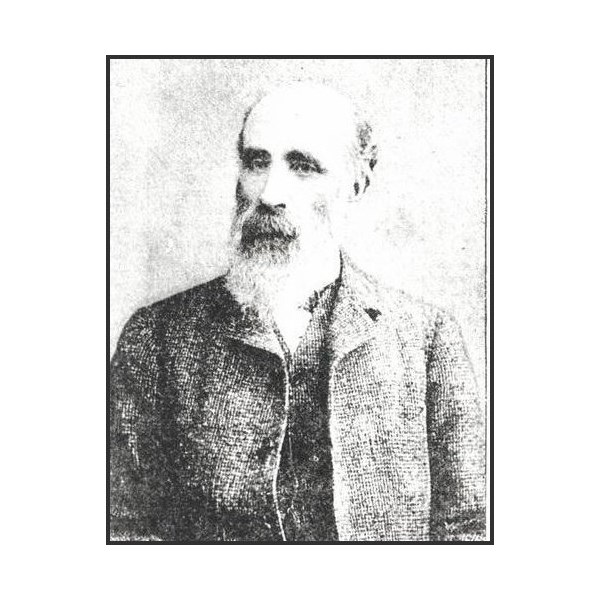
James Barnet, circa 1888
The site consists of the original battery and barracks, designed by Colonial Architect James Barnet, located at the end of Suakin Drive, Georges Heights, two later batteries located adjacent to the corner of Middle Head Road and Best Avenue, Georges Heights, and the Beehive (or Lower) Casemate adjacent to the Armoured (or Upper) Casemate in Chowder Bay Road. The Georges Head Battery is one of three forts in the area that were built for the purpose of defending the outer harbour. The other two forts are located at Middle Head and Bradleys Head, Mosman. The fort became a command post in the 1890s for the coordination of all of
Sydney's harbour defences. It was decommissioned in 2002 and part of the land is managed by the
Sydney Harbour Federation Trust, with other parts managed by the NSW National Parks & Wildlife Service as part of the
Sydney Harbour National Park.

Georges Head Battery, (1874-1875)
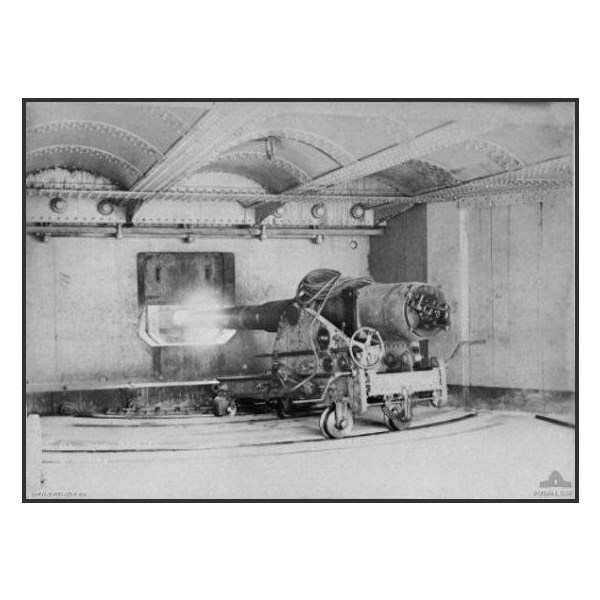
6 inch Mk V gun Georges Head 1892
In 1999, the Georges Head Military Fortifications was inscribed on the State
Heritage Register and in 2004 the Chowder Bay Barracks Group, including the Georges Head Battery, was inscribed on the Australian
Heritage Database
Following the removal of the British forces from Australia in 1870, construction began in 1871 on the battery at Georges Head and was completed in 1873. The departure of British forces put the onus on colonies like New South Wales and Victoria to assist in, and organize its own defences, prior to the Federation of Australia.
Georges Head Battery was an outer line harbour defence fortification designed especially to attack and prevent enemy ships from infiltrating the inner harbour. The fort held a prominent position and was located high above sea level with strategic
views to
the entrance of
Port Jackson. Other batteries were located on Middle Head, South Head, Shark Point and Bradleys Head, but none were ever used for combative purposes.
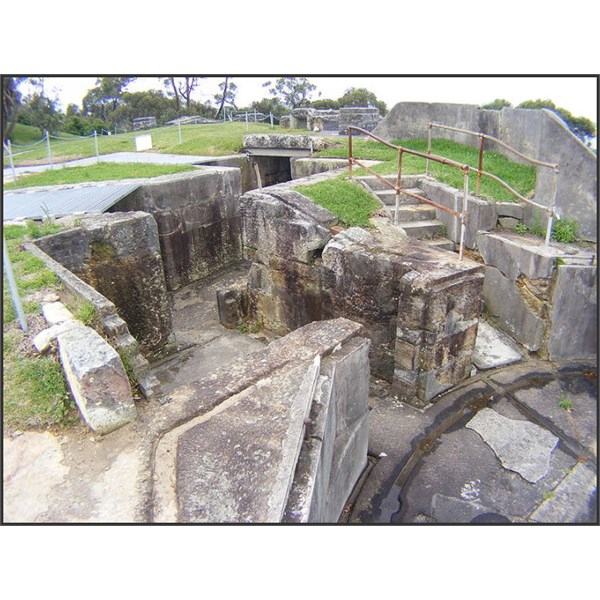
Part of the fortification tunnel complex from above
Georges Head was armed with four 80 pounder rifled muzzle loading guns and two 68-pounder guns. The rifled guns were conversions of the long-obsolete 68-pounder smooth
bore guns, and a common weapon in British colonies. It took three months and 250 soldiers to roll the gun barrels all the way from North
Sydney to the batteries. They came along a rough track which later became Military Road. The guns had been positioned so poorly that this created the risk of one gun firing upon another. Also, the guns and soldiers were visible from the harbour. In 1877 large mounds of earth were placed between the pits to make sure the guns could not fire upon each other and to help protect the gun crew from enemy fire. When construction of the fort was complete, there were a total of 41 gun emplacements positioned around the harbour.
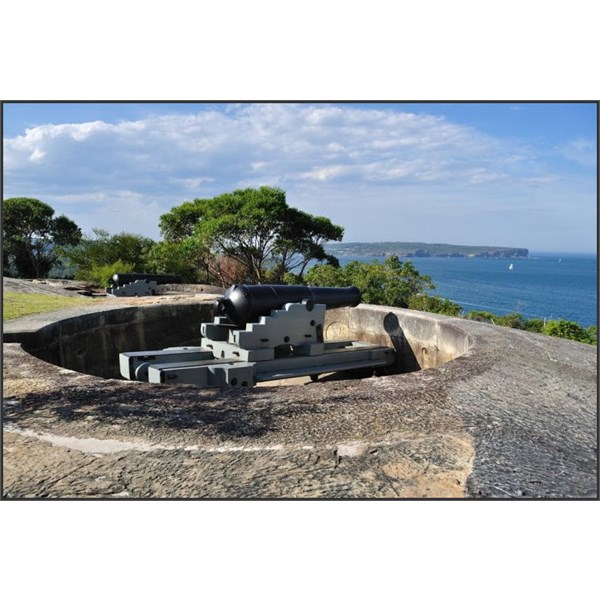
Georges Head Battery Cannons
Defence tactics were planned using telescopes and plotters mounted in the middle of the second gun pit. From the telephone exchange, the
Port Jackson District Commandant could communicate with all military installations on the harbour. Telephone cables ran through the tunnels, down the
cliff and under the harbour to batteries on the other side .
In 1888 Georges Head was chosen as the best place to observe and fire underwater mines, the latest in harbour defences. Each underwater
mine was attached to an electric cable that ran up the
cliff to a firing post. From there, miners watched for ships entering the harbour. The miners' job was to explode the
mine closest to an approaching enemy ship. Minefields were laid across the main shipping channels of
Port Jackson from 1876 to 1922 and a base was built at Chowder Bay for the submarine miners.
The work of the submarine miner was secretive, technical and dangerous. During a demonstration in 1891, a crowd of several thousand watched as a terrible accident killed four miners and injured another eight
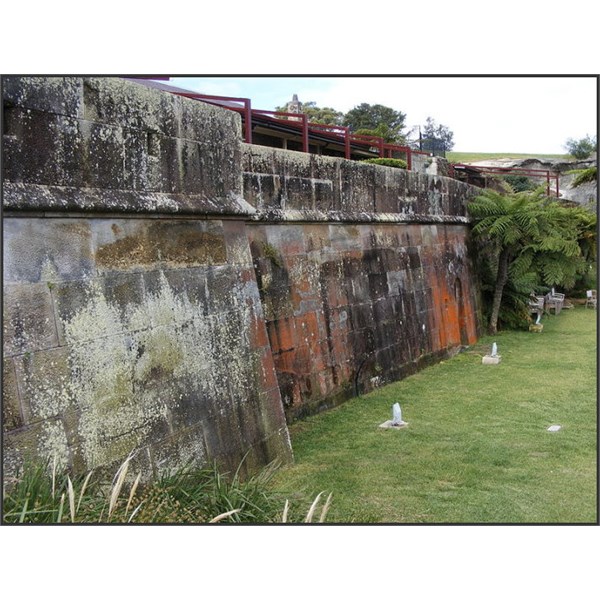
Georges Head Battery seen from outside
In 1942, during the Second World War, the
Sydney Harbour anti-submarine boom net was installed. The boom net spanned the entire width of
Sydney Harbour from Green (Laings) Point, Watsons Bay to Georges Heights in Mosman.
The command post remained until the 1930s. The area then became
home to various defence bases until 2002 when the Australian Army left after 130 years at Georges Head. The area in which the fortifications are situated is now open to the public and the
Sydney Harbour Federation Trust has restored the historic fortifications, creating a new type of
lookout.
The hospital was carved out of solid
rock during the construction of the tunnel system in 1872, and was originally designed to provide a storage room for the black powder charge used when firing the 68-pounder and 80-pounder guns of the battery.
The floor was originally covered in a bituminous substance, the walls were tiled with ceramic tiles not unlike those seen on the wall pictured, and the tunnel ceiling leading to the room was lined with cork. The purpose of these measures was to reduce the possibility of sparks and the potential for a powder explosion. The zigzag tunnel at the far end of the room was designed to act as a blast wall to contain any blast within the immediate area.
The room has been modified since 1872 and was used as a casualty
clearing station in 1932/33 when the battery was re-gunned with the 6 inch breech loaded MK7 guns. Designed for emergencies only, it fortunately saw no casualties of war.
.